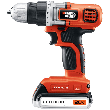Building a Glass Block Wall
Written by Lee Wyatt (last updated November 5, 2018)
Have you ever wanted to have a glass block wall built into your home? If so, you are in luck, as this is really a fairly simple project to accomplish. Now, just because you can do this project on your own, doesn't mean that you have to do it on your own. Whenever you consider installing any type of wall into your home, you should always consider hiring a professional to get the job done right. However, if you cannot afford to hire a professional, then you can always do your own work. Here's how.
- Inspect the plans. It's always is a good idea to get an idea of what is in a particular wall before you begin to remove it. The best way to do this is to look at the plans. You don't want to cut into something important if you can avoid it. For example, do you know if the wall you may remove contains any wiring for your phone, cable, internet, home entertainment system, and so on? Maybe it contains a water supply pipe, or drainage pipe. Take the time to inspect prior to cutting.
- Identify the wall type. Before you actually begin tearing out any walls, be sure that you know what type of wall it is. This is particularly important if the wall you are thinking about removing is a load-bearing wall. If you remove this type of walls, you can find yourself faced with allsorts of expensive problems. To learn a little more about how to identify a load bearing wall, type in the phrase "finding load-bearing walls" in the search box at the top of the Home Tips screen, and you will find a great article that discusses how to do this in depth.
- Frame the new wall. Once you remove the old wall, you need to begin framing where the new wall will be going. The first step in doing this is to do a "dry run" with the glass blocks. Lay down the first row in the same pattern that you will be using for the real thing. Mark this down on the floor and begin laying down your baseboards. Once you have the base boards laid, apply a little asphalt emulsion to them so that you can lay your glass blocks later. Draw some plumb lines straight up from the baseboards so that you have a guide, being sure to install a panel anchor stud every couple of rows to help hold the wall in place.
- Prep the work site. After you have the location for the new wall framed, it is time to begin prepping the work site. This means that if it is necessary, go ahead and lay down some painters cloths to help protect any exposed flooring from the work you will be doing.
- Lay the blocks. Begin laying your blocks by first laying down some mortar on the base board. If you applied the asphalt emulsion, then you will have a better base to work from for your wall. Be sure that you do not mix too much mortar, the ideal amount is to only mix as much as you will use in 30 minutes. As you are laying the blocks, be sure that you are also using T-spacers to properly ensure enough space between each block, and each row of blocks. Continue laying your blocks until you have reached the desired height. Ensure that you also work the panel anchors into the rows as you come to them. Periodically check to ensure that your work is level and straight.
- Clean and finish the wall. Once you have finished laying the bricks down, or after 30 minutes of laying the particular row down, make sure that you remove the T-spacer, and then pack the voids with some more mortar. Allow everything to dry properly before cleaning. Using a soft wet sponge, thoroughly clean the entire brick wall, ensuring that the glass bricks are totally clean. Rinse the sponge as necessary to ensure you get everything clean, and then allow the mortar to cure. The mortar should be properly cured in about two weeks, and that is when you can apply some sealant, as well as caulking the seam between the glass blocks and the adjoining wall. Cover the baseboards with some molding, and reinstall any flooring if necessary.
Author Bio
Lee Wyatt
Contributor of numerous Tips.Net articles, Lee Wyatt is quickly becoming a regular "Jack of all trades." He is currently an independent contractor specializing in writing and editing. Contact him today for all of your writing and editing needs! Click here to contact. Learn more about Lee...
Protecting Potted Plants from Cold Weather
Anyone who has ever grown potted plants knows just how much havoc cold weather can play with them. If you are thinking ...
Discover More
Planning an Irrigation System for Your Garden
Planning an irrigation system for your garden is, in many ways, quite different from doing the same thing for your yard. ...
Discover More
Fish Batter
Fish and chips are a great meal, and an even better snack. In order to do it the right way though, you will want to make ...
Discover More
More Home Improvement Tips
Finding Wall Studs
If you are thinking of hanging anything on your walls, then chances are you know that it is best to hang them on a wall ...
Discover More
Repairing Masonry Walls
Even the most well-made and properly maintained masonry wall will eventually need a repair or two. If the problem isn't ...
Discover More
Repairing Cracks in Plaster Walls
While plaster may be a very popular building material, it is also somewhat susceptible to cracks. If you don't take the ...
Discover More

Comments